It’s curious to me that more women than men responded to the call for a third round-up of self-portraits on Vasari21. That’s possibly because there are more female members than male (though I can’t tell you the exact ratio), possibly because women traditionally spend more time scrutinizing the self than men do. Certainly there has been no shortage of great women artists who have left us records of how they look, often warts and all, as in Lee Krasner’s tough-minded confrontations with her face throughout her life or Alice Neel’s unsparing old-lady nudes. Of course, women have also gloried in their vibrancy and beauty: Think of Vigée LeBrun’s magnificent self-portrait of the artist at work or any number of Marina Abramović’s glorifications of her naked body—at all ages.
Whatever the impulse, whatever the sex or medium, I’m grateful artists still pursue this centuries-old genre. And the diversity seems a healthy sign that the ubiquitous selfie is not the only way to record our selves for posterity.
Ty Zemelsky: Self-Portrait (2007), ink and water media on paper, 18 inches in diameter
Since the beginning of my career, my work has gone from figurative, even in a spirit of storytelling, to abstract and beyond. This self-portrait was made during a period when I worked more with story and very intricate, intense pen-and-ink drawings. These took up a good ten years or so, and there have been other time periods when I’ve done self-portraits as well. Then I flip to the other end of the spectrum [see “Art and Meditation”]. These two “personalities” of me take turns. While I was making the cut drawings, I thought I would not turn back to the intense ink-drawing storytelling again. I keep working on the idea of bringing the two of them together, but I haven’t mastered that successfully yet.
Leslie Kerby: Self-Portrait (2006), three-color linocut with chine collé, 22 by 22 inches
This self-portrait was created for a show of gallery artists making self-portraits for the Object Image Gallery (now closed) in Brooklyn in 2006. I was doing a lot of printmaking using linoleum plates at that point and looked at the project as a way to experiment with color and chine collé, However, I ended up framing a black-and-white version of the print for the show. In looking for this image, I realized this show took place before “selfies” came into being.
Blossom Verlinsky: Self-Portrait as Marie Antoinette (2014), acrylic on canvas, 24 by 18 inches
I have not looked directly at my face in a while because confrontation with reality is difficult sometimes. Here, I am assuming the identity of Marie Antionette, dressed in regal jewelry; the faded silk wall coverings are her background; her hair is a tableau of flowers, green gardens, boats, and simulated water. This is a study using bits of paint and the patterns that have become the basis for my larger, abstract work.
Ed Haddaway: Portrait Of The Artist Suffering For His Art (2002), painted steel, 32 by 25 by 15 inches
From an autobiographical statement called “Angst and Suffering off the Fat of the Land.” “What do you have to feel bad about?” my wife asks me. “You have everything so good. You should count your blessings.” I look up sullenly. It is a well-known fact you get everything you want and then you commit suicide.
A lady said to me “You must be such a happy person. Your work is so bright and whimsical.” No, lady, I am a miserable son of a bitch. Just ask my wife.
When you open yourself up, the world comes flooding in. No wonder I feel so fat. Open a door, open a door. I need to get out. I don’t care how happy I am, I’m still going to die. Open a door, a window or something. Life and death, sleep, dreams, clean the house, mow the grass, with your eyes shut you can imagine your own death. Go inside, go outside. Wake up, go to sleep.
I wanted to be a writer when I got out of college. My upper-middle-class white Anglo-Protestant self said, “You better suffer, so you’ll have something to write about.” So off I went to a whorehouse in Mexico, to get so drunk that I couldn’t find my way back across the border. Later as I was moving out of the $45-a-month room which I had occupied for three days in the south valley of Albuquerque and which had newspapers on the wall and little notes posted around saying “watch out for roaches” and an open sewer out my back door, I said to myself “I think I’ve suffered enough.” I did not become a writer.
Don’t go looking for suffering. You’ll get enough when it all comes flooding in. Open a door or a window or something.
Erin Currier: Self-Portrait (2011), oil on canvas, 36 by 24 inches
I believe that my art plays a role, however small, in international movements for social justice. For me, art is work, art is spiritual practice, art is poetry, and art is a necessary element of every struggle, and of every revolution. Above all, the self-portraits are meant to convey this spirit of solidarity. I create a self-portrait every year or two—both as an archive of where I am at philosophically, and to express the fact that I empathize and identify with the people I portray. This is one example of an ongoing series. I share a deep affinity with many of the workers, women, poets, civil-rights activists and others I portray in my work.
Jane Barthes: Self-Portrait (1996-97), oil on canvas, 63 by 63 inches
This is a self-portrait (without my face). I was interested in trying to capture the process of painting, so I treated it more like an exercise even though there’s a narrative. Some areas are less in focus than other,s as the right side of the body is moving and painting. Everything comes to rest in the feet, solidly planted on the floor. The painting was simultaneously an experiment in the use of white (there’s every color involved in creating the white space). It has real home-rolled cigarettes stuck in the paint around the feet as I used to smoke and roll my own!
Just in case you’re interested or perhaps you’ve noticed: I am struck by the fact that the composition and use of negative space are very similar to my understanding and use of it presently in my abstract work!
Mj Bono: Self-Portrait (2017), acrylic on plaster, paper and burlap, 13 by 8 by 8 inches (front and back views)
Since I began working in clay sculpture this year, I have been wanting to make a self-portrait. However, because I am a painterly abstract artist who wants to maintain this sensibility in my self-portrait sculpture, I was unsure how to create it. When I began experimenting with plaster, I felt it was a natural fit for this because like my paintings it dried quickly in one session, was free and spontaneous, and offered an opportunity to add colorful brushwork and pours.
Elisa Decker: Five Hundred and One (2016), archival pigment print, 13 by 9.75 inches
A friend lent me the fabulous Phaidon book. After perusing it at length, I closed the book and happened to notice my painterly reflection on the shiny silver cover. For an ongoing series, I’ve been photographing discrete reflections of myself seen in artworks that use mirrors or reflective materials. It’s just something that began to happen as I would focus on the work, often taking detail shots that help me see. Though I’m doing more photography than painting these days, I still look at the world through painter’s eyes.
Camille Eskell: Silent Strain (1990), oil on paper, black oil pastel, plastic, clay compound, 26-7/8 by 24-1/8 inches
This piece is from an earlier series titled “Recognitions,” and it will be exhibited in the current group show “Me, My Selfie and I” at the Hudson Guild gallery in Chelsea. Works from this and other series continue a thematic thread that has characterized my oeuvre—the concept of duality expressed through psychological and emotional states of being, as well as the format of creating a hand-made mixed-media frame which serves as a sub-text. In this piece, an ambiguous moment is portrayed. The face conveys strain, which can also be read as a grimace, and the hand gesture signals a move to hear and, conversely, to dismiss. The shut lips and open ears that surround the self-portrait (three-dimensional ready-mades embedded in the frame) connote silence and a willingness to listen that underscores the contradiction, while the protruding tongues conjure familiar gestures of mockery.
Sheila Miles: Self-Portrait, oil on panel (2016) 14 by 11 inches
It is just such an ugly old woman.
There I am, naked to myself and I just don’t want to look at it. So there you have it. When you paint your self-portrait you can’t help but see the life you’ve lived. I get up every day, feeling like I am 30-something. There are all sorts of possibilities. By noon I am 40. And by nine p.m. I feel how old I am and it matches this self-portrait. And it ain’t pretty.
Top: Mary Cassatt, Portrait of the Artist (1878), watercolor and gouache on paper, 23,5 by 16 inches
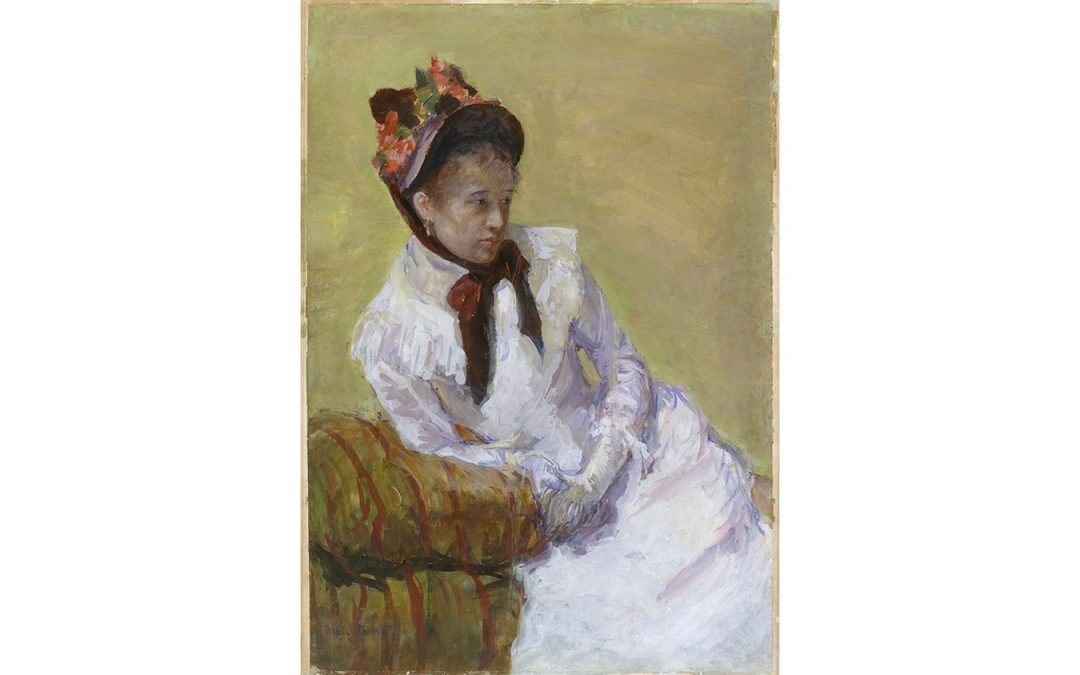
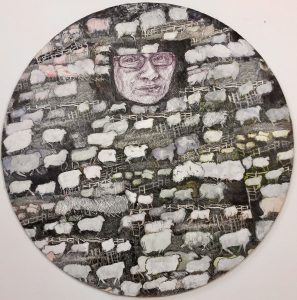
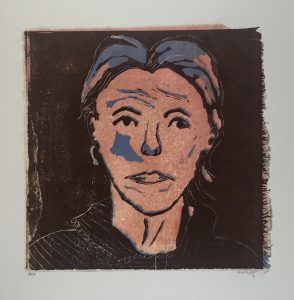
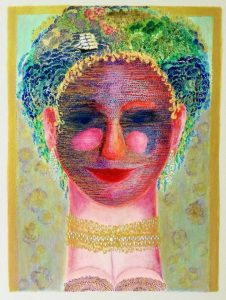
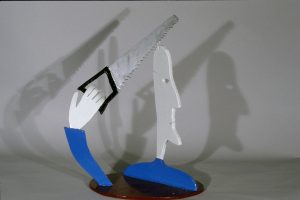
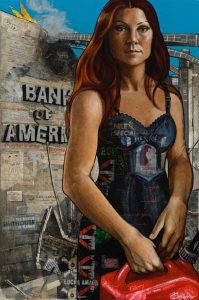
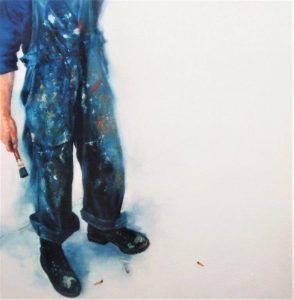
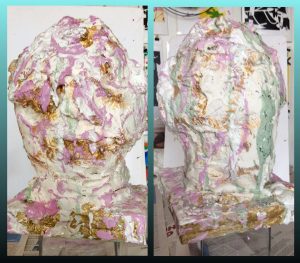
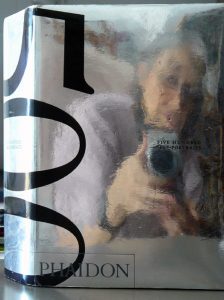
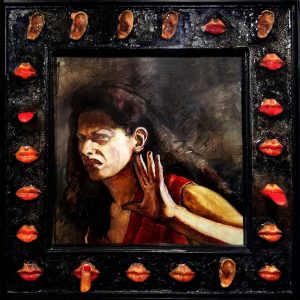
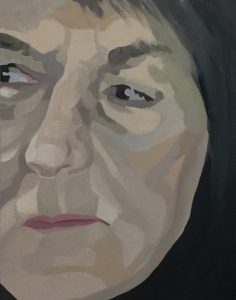
Wonderful series. Terrific variety of artists. Thank you for including me, Ann.
Dear Ann – I am thrilled to be included with this group of wonderful artists.
Blossom
Dear Ann,
Wow! Many thanks for your including me in this group of fascinating artists. Looking through them it almost feels like a conversation in progress going on amongst the images.
Ty Zemelsky
I loved this article and the wonderful array of self portraits! So fascinating to see the variety of approaches to the work, and the artists’s comments enhanced the whole thing. Thank you all!